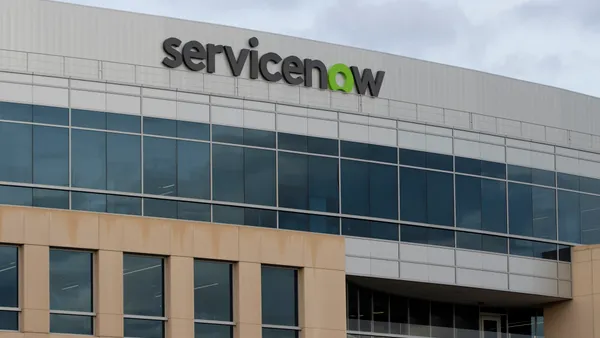Dive Brief:
- AWS posted nearly $30 billion in cloud revenues, a 17% year-over-year increase driven in part by triple-digit growth in AI revenues, Andy Jassy, CEO of parent company Amazon, said Thursday during the company’s Q1 2025 earnings call.
- Amazon continued to invest heavily in its technology infrastructure, reporting nearly $25 billion in capital expenditures, mostly to satisfy demand for cloud and AI services, CFO Brian Olsavsky said.
- “We're not dabbling here,” Jassy said. “We're very intentionally giving builders the broadest possible capabilities at every level of the AI stack cost effectively to use AI expansively across their businesses.”
Dive Insight:
AWS remained the dominant force in cloud during the first three months of the year. The hyperscaler swallowed up 29% of an estimated $94 billion in enterprise spending on infrastructure services, according to a Synergy Research Group report published Thursday.
Compute-hungry large language models contributed to a burst of growth in the already massive global market for cloud, which saw spending spike 23% year over year, SRG Chief Analyst John Dinsdale said in the report.
“Since ChatGPT was launched and generative AI started to have a profound impact on the IT ecosystem, the cloud market growth rate has increased by around seven percentage points,” said Dinsdale. “The market has grown by 52% since the end of 2022.”
AWS’ two largest competitors shared in the bounty, as the market share among the providers has remained relatively stable.
Microsoft saw cloud revenues increase 20% year over year to $42.4 billion, as it held 22% of the global market during the first quarter of the year. Google’s cloud segment yielded $12.3 billion in revenues, growing 28% compared to Q1 2024 and leaving the third-largest player with 12% of the market.
Together, the three cloud giants reported nearly $63 billion in capital investments mostly for infrastructure buildouts to relieve capacity constraints during the first three months of 2025. Amazon alone plans to spend $100 billion this year to boost AWS capacity.
“As fast as we actually put the capacity in, it's being consumed,” Jassy said. “We could be helping more customers and driving more revenue for the business if we had more capacity.”
AWS recently added Amazon Nova Premier to the arsenal of LLMs devouring compute resources on its Amazon Bedrock generative AI managed service platform. The model was designed for complex tasks, including model distillation, and to ingest large documents and code bases, the company said in a Wednesday blog post.
As it expands its AI portfolio, AWS is eyeing the vast quantity of traditional enterprise workloads that have not yet migrated to cloud.
“More than 85% of the global IT spend is still on-premises,” Jassy said. “Infrastructure modernization is much less sexy to talk about than AI but fundamental to any company's technology and invention capabilities, developer productivity, speed and cost structure. For companies to realize the full potential of AI, they're going to need their infrastructure and data in the cloud.”













